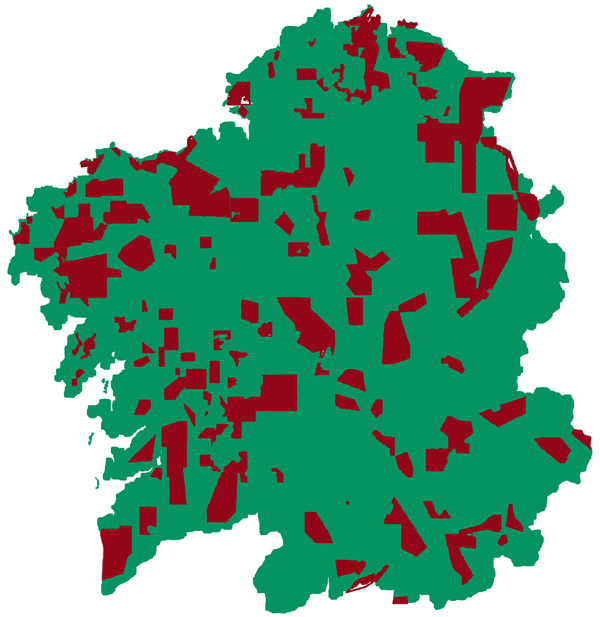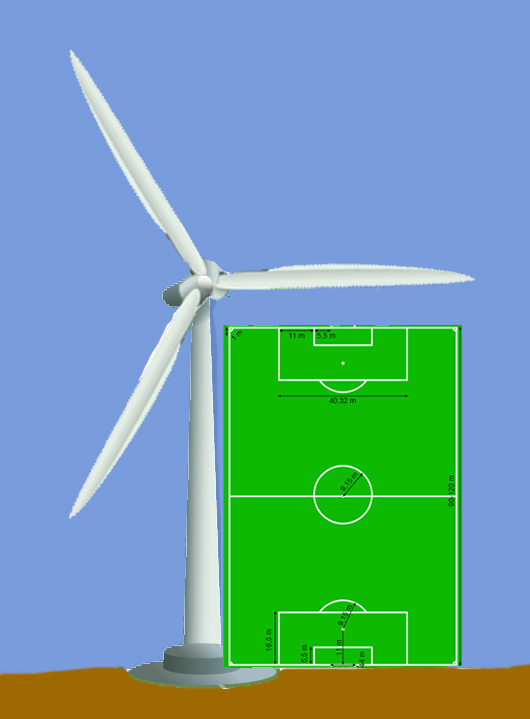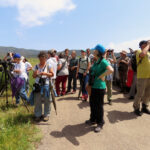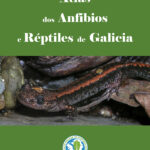Galicia’s Strategic Wind Power Plan (PEEG for its Galician acronym)
In 1996, the “Wind Power Management Project of the Galician Autonomous Community”, also known as “Strategic Wind Power Plan of Galicia”, was submitted to the Galician Council for Environment (back then known as COGAMA for its short in Galician, now known as COGAMADES). The representative of SGHN in COGAMA was part of the non-permanent Working Commission created for the assessment of the PEEG and propose an opinion to COGAMA’s Plenary.
Inexplicably (or not), the members of the Working Commission were given access just to one of eleven volumes of the PEEG: the conclusions one. The representative of SGHN requested that all members of the Working Commission have access to the eleven volumes. The answer was that it was not possible to provide a copy given the high number of volumes and pages of the PEEG.
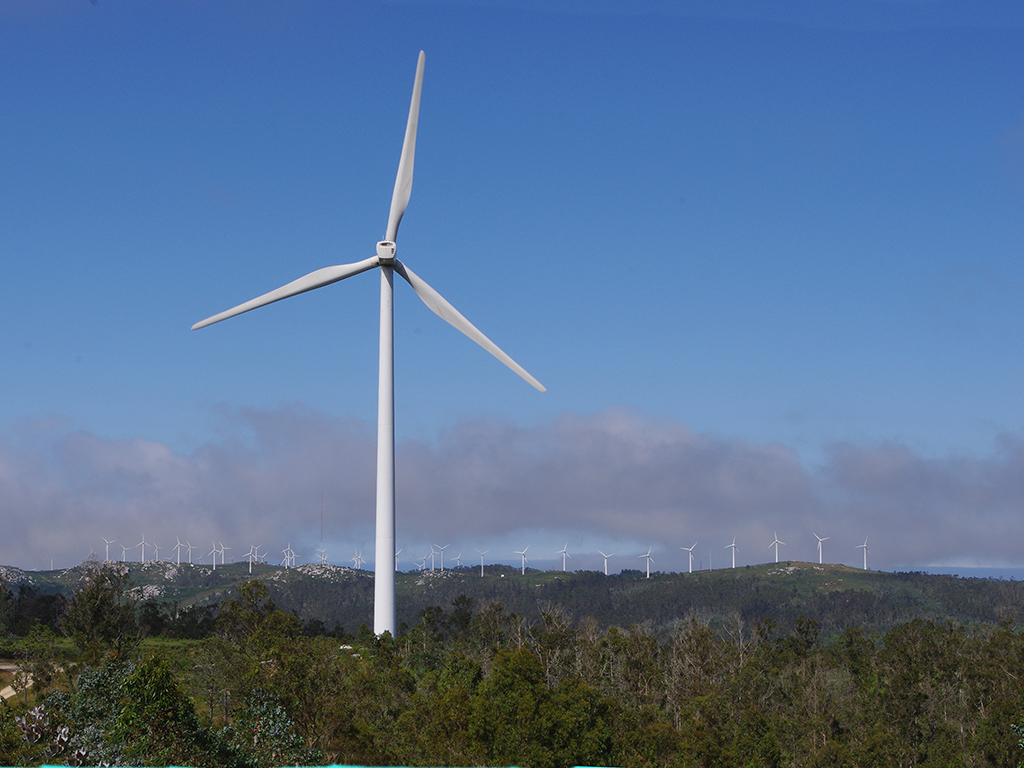
PEEG conclusions volume
Given the only PEEG volume that could be consulted, under the law of access to environmental information, on 11-07-1996 SGHN requested the Chancellorship for Industry and Commerce information on:
- The criteria to assign the elaboration of the PEEG to the private company APASA-GAMESA, instead of doing it on their own and/or with external assistance of Univiersities and research centres of Galicia.
- The measures taken to safeguard Galician public interest and to avoid that APASA-GAMESA would be a judge and a party in the PEEG as it was granted no less than 600 Mw, 22% of all the power approved until then.
- The objective quality criteria to accept the document presented by APASA-GAMESA, as its enormous volume (11 tomes) did not correspond at all with moderation, mediocre and disappointing contents of the conclusions volume (the only one that could be accessed): 9% of the pages are blank, 14% are title pages, 65% have an average of 87 words/page (equivalent to 7-8 text lines) and 13 % have tables, half of which have repeated and redundant information.
- The economic cost of the contract with APASA-GAMESA for the elaboration of the PEEG.
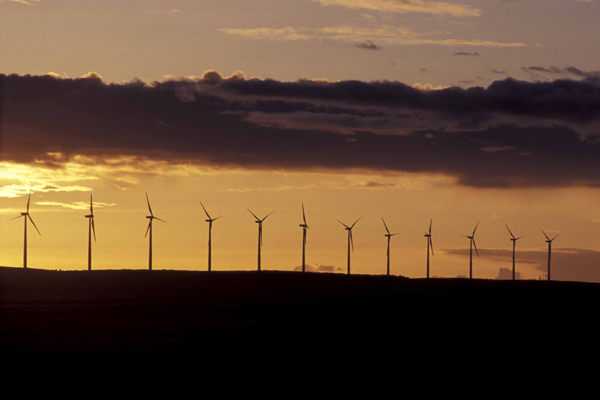
Ombudsman’s protection
Receiving no answer from the chancellorship, SGHN requested and obtained the Ombudsman’s protection, which after successive attempts, managed to get in May 1998 (almost 2 years later!) an answer from the chancellorship to the SGHN… rejecting the petition of information on the basis that it had nothing to do with the environment.
SGHN then addressed all political groups that were represented in the Parliament of Galicia for them to claim the information requested on the PEEG. None of them responded.
A windstorm of wind farms
With the turn of the century the access to environmental information improved, and since 14 years ago SGHN is among the entities from which the Chancellorship for the Environment (sometimes other chancellorships too) is requesting a report on the foreseeable environmental effects of the projects during the consultation procedure prior to public information. With regard to wind power it must be said that the proliferation of wind farms is not a 2021 problem, but a phenomenon that has been manifesting itself over the last 20 years. Thus, for example, in 2011 there was already an authentic “windstorm” of wind farm projects (107 wind farms, 2 new per week), with a lot of them in the Biosphere Reserve Terras do Miño, which led SGHN to address the Spanish Committee of Biosphere Reserves (more…). The numbers were also high in 2020 (45 wind farms) and so far in 2021 (25 wind farms, with up to 3 new wind farms per week!).
Overall, since 2011 SGHN has submitted 274 reports/allegations to 196 new wind farms or extensions/repowerings of existing ones. For any environmental organisation such as SGHN, that works on a voluntary basis, to participate in these procedures is a real challenge especially when the projects accumulate and coincide in time as happened and is happening now with wind farms. Beyond this shadow work and the dedication of many hours to analyse each project, from SGHN we put forward a document of minimum requirements for the installation of wind farms.
It is renewable, but is it sustainable and desirable?
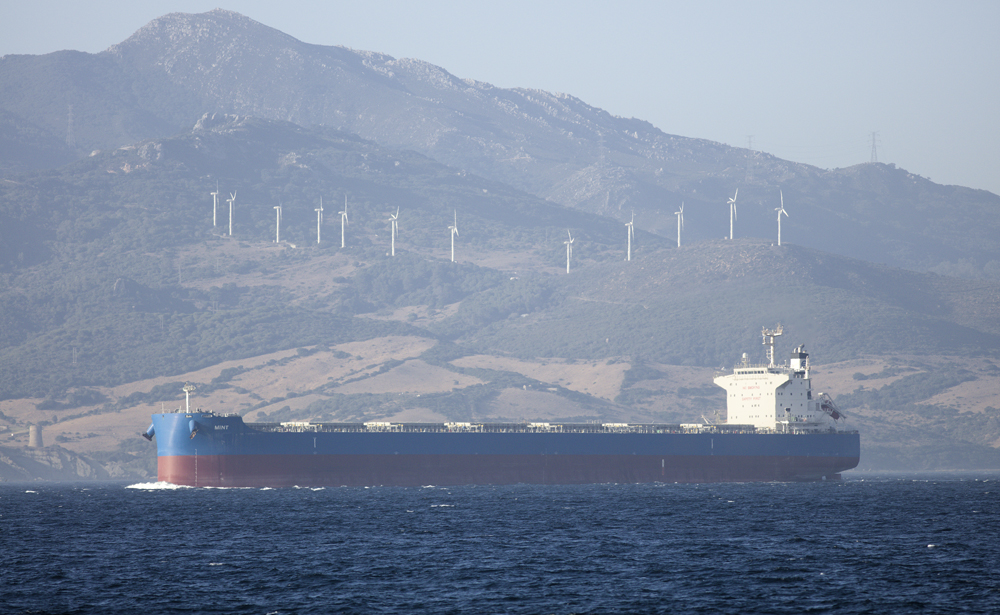
Looking at the picture above, a supertanker in front of a wind farm, surely very few would have any doubts as to which energy source they prefer. Oil = non-renewable fossil energy, greenhouse gasses, oil spills, contamination. Wind farms = renewable and much cleaner energy, but is it really always ecologically acceptable? The answer depends where the wind turbines are installed. The wind farm of the picture is probably in one of the worst places in the world: Tarifa, in the Strait of Gibraltar, where millions of birds have to pass through twice a year during their migrations between Europe and Africa, including hundreds of thousands of gliding birds (storks, eagles, buzzards…) that have more trouble to avoid the wind turbine blades.
In Galicia, some wind farms have already impacted severely in notorious natural areas, such as the peat bogs of the SAC Serra do Xistral, and cause a mortality of birds and bats of which there is not (or they do not want to give to SGHN) official statistics.
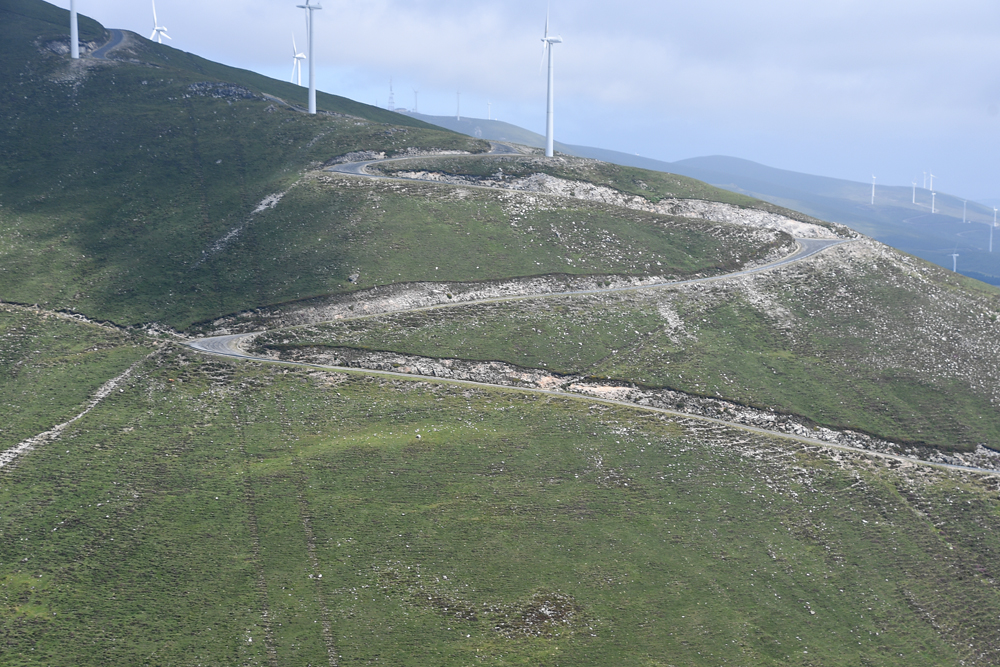
Wind farm in the SAC Serra do Xistral 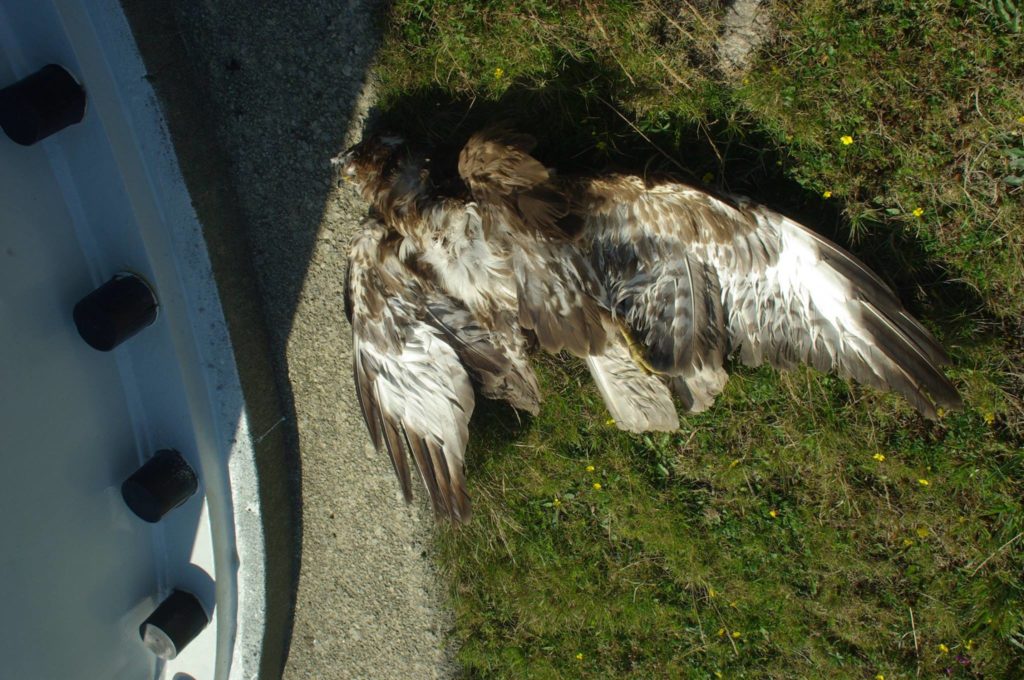
Buzzard (Buteo buteo) killed by wind turbine impact
Answer to the “Celtas sen filtro” dilemma
In 1983, Méndez Ferrín and Artello Teatro launched “Celtas sen filtro” (Celts without filter), in which civil, military and religious authorities discussed whether or not to exploit a newly discovered oil field under the Portico of Glory in Santiago de Compostela. Almost 40 years later, no “black gold” was discovered in Santiago or in the rest of Galicia, but many are looking for it. What would the authorities of “Celtas sen filtro” think if there was a plan to install in their respective cathedral tower a macro-wind turbine?
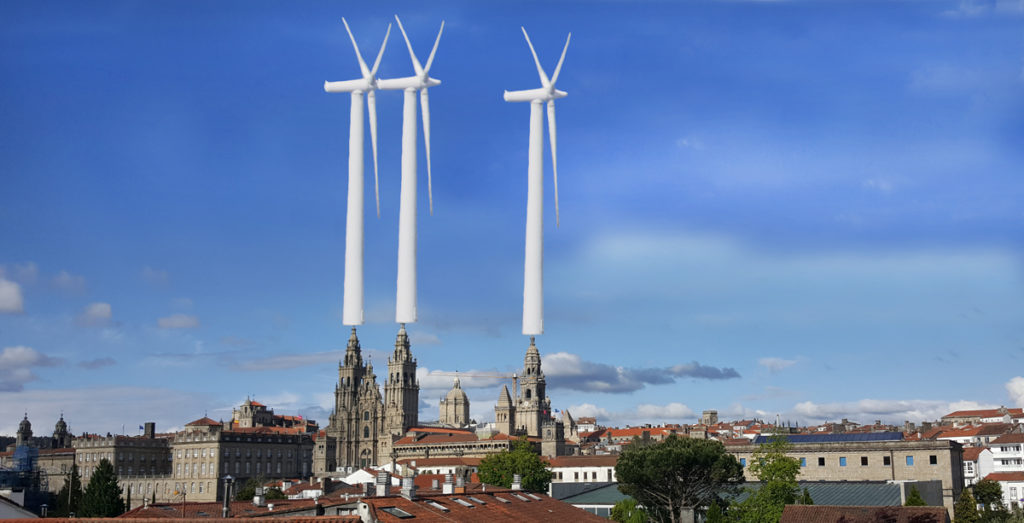
For SGHN the answer is very simple: no energy project that destroys or puts in danger the Santiago cathedral or the rest of our cultural heritage would be acceptable. But equally unacceptable is any project that endangers any of the “cathedrals” of our natural heritage. Thus, SGHN manifests its support to all people and organisations who nowadays are critical of this upcoming windstorm. SGHN reminds the need to streamline the consumption and prioritize saving and energetic efficiency in every field and supports clean energies, but NOT LIKE THIS!

